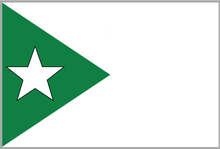
The Maasai are a Nilotic ethnic group inhabiting northern, central and southern Kenya and northern Tanzania, near the African Great Lakes region. The Maasai speak the Maa language, a member of the Nilotic language family that is related to the Dinka, Kalenjin and Nuer languages. Except for some elders living in rural areas, most Maasai people speak the official languages of Kenya and Tanzania, Swahili and English.
The Nilotic peoples are people indigenous to the Nile Valley who speak Nilotic languages. They inhabit South Sudan, Sudan, Ethiopia, Uganda, Kenya, the eastern border area of Democratic Republic of the Congo, Rwanda, Burundi and Tanzania. Among these are the Burun-speaking peoples, Teso people also known as Iteso or people of Teso, Karo peoples, Luo peoples, Ateker peoples, Kalenjin peoples, Karamojong people also known as the Karamojong or Karimojong, Datooga, Dinka, Nuer, Atwot, Lotuko, and the Maa-speaking peoples.
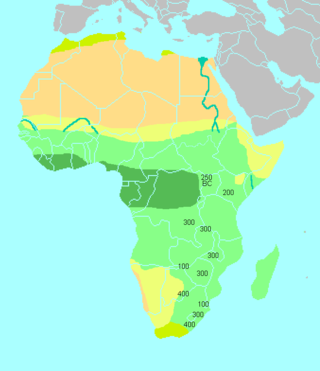
The Bantu expansion was a major series of migrations of the original Proto-Bantu-speaking group, which spread from an original nucleus around West-Central Africa. In the process, the Proto-Bantu-speaking settlers displaced, eliminated or absorbed pre-existing hunter-gatherer and pastoralist groups that they encountered.

Lake Eyasi is a lake located in Karatu District of Arusha Region in north Tanzania. Lake Eyasi is the largest body of water in Arusha region. It is a seasonal shallow endorheic salt lake on the floor of the Great Rift Valley at the base of the Serengeti Plateau, just south of the Serengeti National Park and immediately southwest of the Ngorongoro Crater in the Crater Highlands of Tanzania. The lake is elongated, orientated southwest to northeast, and lies in the Eyasi-Wembere branch of the Great Rift Valley.

Arusha Region is one of Tanzania's 31 administrative regions and is located in the northeast of the country. The region's capital and largest city is the city of Arusha. The region is bordered by Kajiado County and Narok County in Kenya to the north, the Kilimanjaro Region to the east, the Manyara and Singida Regions to the south, and the Mara and Simiyu regions to the west. Arusha Region is home to Ngorongoro Conservation Area, a UNESCO World Heritage Site. The region is comparable in size to the combined land and water areas of the state of Maryland in the United States.

The Rendille are a Cushitic ethnic group inhabiting the Eastern Province of Kenya.

'Monduli District is one of seven districts of the Arusha Region of Tanzania. It is bordered to the north by Longido District, to the east by Arusha Rural District, to the south by the Manyara Region and to the west by Ngorongoro District and Karatu District. The District covers an area of 6,993 km2 (2,700 sq mi). The town of Monduli is the administrative seat of the district. According to the 2002 Tanzania National Census, the population of the Monduli District was 185,237. By 2012, the population of the district was 158,929. By 2022, the population had grown to 227,585.

Karatu District is one of seven districts of the Arusha Region of Tanzania. The district is bordered to the north by the Ngorongoro District and to the west by the Meatu District in the Simiyu Region. The district is bordered to the east by the Monduli District, and to the south and southeast by the Mbulu District and the Babati District. The district covers an area of 3,207 km2 (1,238 sq mi). The district is comparable in size to the land area of Samoa. The district has an max elevation of 1,739 m (5,705 ft) on Oldeani Peak. Predominantly settled by Iraqw, Karatu district is home to the hunter-gatherer community of the Hadza people. Also Karatu is known agriculturally as the onion capital of Tanzania. The district capital is the town of Karatu. According to the 2022 census, the population of the district was 280,454.

Mbulu District is one of the six districts of the Manyara Region of Tanzania. It is bordered to the north by the Arusha Region and Lake Eyasi, to the east by the Babati Rural District, to the south by the Hanang District, and to the west by the Singida Region. According to the 2022 Tanzania National Census, the population of Mbulu District was 238,272.
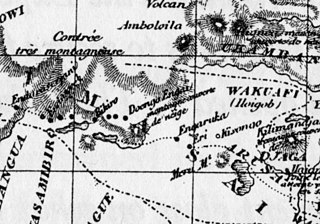
Engaruka is an abandoned system of ruins located in northwest Monduli District in central Arusha Region. The site is in geographical range of the Great Rift Valley of northern Tanzania. Situated in the Monduli District, it is famed for its irrigation and cultivation structures. It is considered one of the most important Iron Age archaeological sites in Tanzania. The site is located in the ward of Engaruka. The site is registered as one of the National Historic Sites of Tanzania.
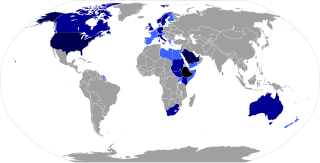
Ethiopians are the native inhabitants of Ethiopia, as well as the global diaspora of Ethiopia. Ethiopians constitute several component ethnic groups, many of which are closely related to ethnic groups in neighboring Eritrea and other parts of the Horn of Africa.

The Datooga are a Nilotic ethnic people group from Tanzania, located in Karatu District of Arusha Region and historically in areas of southwest Manyara Region and northern Singida Region. In 2000, the Datooga population was estimated to number 87,978.
The Alagwa are a Cushitic ethnic group mostly based in the Kondoa District of the Dodoma Region in central Tanzania, an area well known for rock art. Smaller numbers of Alagwa reside in the Hanang district of the Manyara Region in Tanzania, as well. They speak the Alagwa language as a mother tongue, which belongs to the South Cushitic branch of the Afro-Asiatic family. In 2022, the Alagwa population was estimated to number 52,816 individuals, and Mous (2016) estimates the number of speakers to be slightly over 10,000.
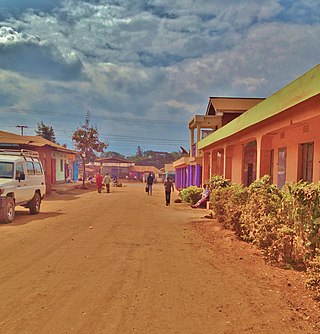
Karatu or Karatu Town is an administrative ward and district capital located in the Karatu District of the Arusha Region of Tanzania. The ward town is bordered on its north side by Ganako ward, to the east by Rhotia ward, to the south by Endamarariek ward, and to the west by Qurus ward. According to the 2012 census, the ward has a total population of 26,617. Karatu ward is the most populous ward in Karatu district and is the capital of Karatu District.

The Konso, also known as the Xonsita, are a Lowland East Cushitic-speaking ethnic group primarily inhabiting south-western Ethiopia.

The Gabra are a Cushitic ethnic group who mainly inhabit the Moyale and Marsabit regions of northern Kenya and the highlands of southern Ethiopia. They are closely related to the wider Oromo people and practice Islam and Christianity as their religion.

The Mbulu Highlands is a plateau in north-central Tanzania.
Mbulu is a town in Tanzania and the capital of the Mbulu District. The town is inhabited by the Iraqw people. The Roman Catholic Diocese of Mbulu is also in Mbulu.

The El Molo, also known as Elmolo, Dehes, Fura-Pawa and Ldes, are an ethnic group mainly inhabiting the northern Eastern Province of Kenya. They historically spoke the El Molo language as a mother tongue, an Afro-Asiatic language of the Cushitic branch, and now most El Molo speak Samburu.

The boundaries of this corridor can be defined within the Maasai territory. The corridor stretches from the Arusha Region, through the Kilimanjaro Region of Tanzania to the Taita-Taveta County of Kenya. To varying degrees, the people in this corridor are essentially a mixture of similar Bantu, Nilotic and Cushitic branches of the African people. The groups were dynamic, fluid and flexible. They shared a common history characterised by constant movement between the different areas for trade, battles, migration as well as social reasons. They were categorised arbitrarily by Europeans into the following culturally, linguistically and/or genetically related groups:
